The Top 200 Songs of the ’80s
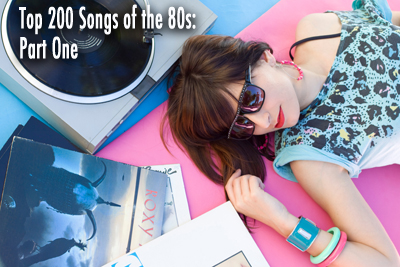

30. The Cure – “A Forest“
(1980; Fiction)
Written in an era when Robert Smith had yet to discover hairspray and The Cure was not yet synonymous with “goth,” “A Forest” is a post-punk masterpiece. A momentum-building centerpiece to the band’s understated 1980 album Seventeen Seconds, “A Forest” is a monumental accomplishment of mystery and intrigue, played with just four sinister chords. Nothing in “A Forest” is over the top, nor is any of it overtly confrontational. It seduces the listener rather than bludgeons, as Lol Tolhurst’s mechanical beats and Robert Smith’s hypnotic guitars stretch and climb toward an eerie, psychedelic climax. And even when some slight touches of keyboard arise during the chorus, they don’t overpower or take the lead, but rather add an odd red glow to the dense fog that permeates the song. “A Forest” offers more questions than answers, but getting lost in the ambiguity is half the fun. – Jeff Terich

29. Joy Division – “Atmosphere“
(1980; Factory)
Joy Division’s slow jams were, for me, hard to really get into. Even at their most aggressive, they were still mostly impenetrable masses of bleakness. “Atmosphere” seems to be a remarkable detour from the standard formula. While still as gloomy as one would expect, Bernard Sumner’s beautiful synth line gives one the sense of ecstasy rather than tragedy. Even Curtis’ delivery of “Don’t walk away, in silence/ See the danger/ Always danger/ Endless talking/ Life rebuilding…” gives off the sense that it’s better to overcome than to be overtaken even if the odds are stacked very much in everyone’s disfavor. No wonder Anton Corbijn made the video for this song the way he did in commemoration of Curtis, it’s a song that eases grief rather than glamorizes it, it’s a greater reminder as to why we listen to and respect Joy Division beyond “Love Will Tear Us Apart.” – Chris Morgan

28. The Replacements – “Alex Chilton“
(1987; Sire)
“Alex Chilton” opens with that chorus riff, and the hook remains lodged thereafter. The chorus has always stuck with me: “I’m in love/ What’s that song? / I’m in love with that song.” That’s everyone’s first encounter with great music in a dozen words. It probably sums up Paul Westerberg’s first listen to The Box Tops or Big Star. That was definitely my experience when I first heard the chorus of “The Ballad of El Goodo” rain down. The other lyric that sticks is “I never travel far without a little Big Star.” (The first nine words in my personal survival guide.) Writing about this song is pretty interesting, though not because of Alex Chilton’s death last year or the fact Chilton played guitar on another Replacements track from the same album (“Can’t Hardly Wait”). Just recently I heard Chilton’s cover album Loose Shoes and Tight Pussy for the first time, which features a rendition of Brenton Wood’s “The Oogum Boogum Song.” I couldn’t get the Wood version out of my head for weeks after rediscovering it, and the Chilton cover has been with me for the last few days. I’m in love with that song; I’ll always love Alex Chilton. – Hubert Vigilla

27. David Bowie – “Ashes to Ashes“
(1980; RCA)
Eleven years after introducing noble astronaut Major Tom to his audience, and following a few rough years with cocaine and a collapsing marriage, David Bowie assumed the role of the disgraced spaceman in what is simultaneously one of the weirdest and most accessible singles in his entire catalogue. Referencing his own substance abuse while attempting to shake the dust off of a troubled era, Bowie sings, “Ashes to ashes/ funk to funky/ we know Major Tom’s a junkie/ strung out in Heaven’s high/ hitting an all… time… low.” And oddly, in the video, he does this all while walking around in a clown suit. On a beach. Trailed by a large tractor. Self-referential and surreal, “Ashes to Ashes” is the pinnacle of sleek ’80s art-pop, all wobbly keyboards and sometimes satirical, often confusing visuals. In its coda, however, “Ashes to Ashes” doesn’t hit rock bottom, but rather ascend toward the heavens with keyboards firing like shuttle blasters. Ironically, this was damn near an all-time high. – Jeff Terich

26. Talking Heads – “Once In a Lifetime“
(1980; Sire)
As far as raw material goes, there’s always the midlife crisis. But since it’s all over the place in literature and film, there needs to be something unique about a given work that separates it from being just another iteration of John Cheever. “Once in a Lifetime” pushes its presentation into its own Talking Headsy direction so it can transcend the familiarity of the material. On the production side, Brian Eno builds a jittery polyrhythm by stacking layers of repetitive instrumentation atop each other. It gives the song a spacey and cluttered feel, like all that sound is some inescapable cultural noise — QWERTY keyboards, dot matrix printers, adding machines, the commute, satellites blipping in space, the static of a dead channel. Then there’s David Byrne’s second-person narration, which is both a sermon about the sham of suburban complacency and the thoughts of a disappointed man looking at himself in the mirror. A revelatory line closes the final verse –“My god, what have I done” — which is usually, similarly, the implied last line in so many of those midlife crisis stories. – Hubert Vigilla

25. X – “Los Angeles”
(1980; Slash)
I vividly remember hearing X’s “Los Angeles” on commercial radio as a teenager, completely uncensored, my mind spinning at the thought of a DJ playing those lyrics and not get fired, or at the very least, fined a hefty amount by the FCC. “Then again censoring “Los Angeles” might remove its claws. “Los Angeles” cuts deep and doesn’t pull any punches. Having made their name in a scene of careening nihilists like Fear and The Germs, X made intense music, but were still the most melodic of the Los Angeles punk scene, and furthermore, the best songwriters. Having production aid from The Doors’ Robby Krieger didn’t hurt, but with some stellar rockabilly punk riffs from Billy Zoom and two charismatic singers in John Doe and Exene Cervenka, X quickly moved to the head of the SoCal punk class. But they were still a punk band, after all, and their music reflected the seedy, grimy side of Los Angeles, much to the contrary of those other bands on the Sunset Strip. “Los Angeles,” their signature song, is a tale of an outsider’s view, and a fairly unforgiving one at that, where a sheltered and naive worldview is shattered to bits. That it’s a third person account, however, rather than an expression of personal angst spoke volumes about the band’s poetic style, which earned them comparisons to Raymond Chandler and Charles Bukowski. This tale of fear and loathing in Los Angeles may be a little more Bret Easton Ellis, but regardless, it’s more than just a kickass song, it’s an unsettling piece of storytelling. – Jeff Terich

24. Queen & David Bowie – “Under Pressure”
(1981; EMI)
I don’t feel that I owe Vanilla Ice very much, but I will give him this: He inadvertently introduced me to both Queen and David Bowie. Like most of my fellow third graders, I thought “Ice, Ice Baby” was a jam the first 50 or so times I heard it. Then it began to lose its luster, and then we learned that Vanilla had lifted the song’s signature bassline from someone else. I’d heard of Queen and David Bowie, but didn’t know much about either. After “Ice Ice Baby” came out, a lot of local radio stations started playing “Under Pressure” on regular rotation again, and the difference between the former’s hatchet job of the latter’s loose and soulful jam was evident even to a nine-year-old’s ears. Building into a friendly duel between Bowie’s simmering charm and Freddie Mercury’s epic bombast, the song is an anthem for anyone in over their head, showcasing the best of both its creators. Sometimes I wish they did more recording together, but then again, they probably knew there’d be no topping this. – Elizabeth Malloy

23. The Clash – “Rock the Casbah”
(1982; CBS)
Not unlike The Cure’s “Killing an Arab,” The Clash’s irresistible dance-punk opus “Rock the Casbah” is one of the great misinterpreted—or at least misappropriated —songs of the post-punk era. Apparently this jam sounds just great when being blasted in your cockpit as you shock-and-awe some local population in the middle of the desert. Yet beyond a simple examination of the lyrics or a thought to what The Clash were about, the fact that Joe Strummer reportedly “wept” at hearing that the words “Rock the Casbah” had been scrawled onto an American bomb headed to Iraq during the first Gulf War says everything about that flippant interpretation. No, this song merely supplants a typical punk rock fantasy to a Middle Eastern setting; the younger generations get rowdy to some raucous rock music, the powers that be try to use the religion and ultimately state violence to suppress the unfavorable self-expression. It seems to end badly, but the resilience of youth and music is implied not only lyrically, but also in the pure awesomeness of this tune. That piano riff, the beat, the hook, those piercing, angular guitar strikes… is it possible to not dance when you hear this song? I wouldn’t know—I’m gettin’ down a little bit as I write this sentence. – Derek Emery

22. The Church – “Under the Milky Way”
(1988; Arista)
“Sometimes when this place gets kind of empty…” “Under the Milky Way” was an anomaly. At the time of its release, in early 1988, the charts were dominated by pop holdovers from 1987, such as singles from George Michael, Whitney Houston, Michael Jackson, and the soundtrack from Dirty Dancing. Then, along comes a somber acoustic-electric guitar opening, and the deep and introspective voice of Steve Kilbey. The result is not only one of the best songs of the ’80s, but one of the best songs of all time. In fact, if one song could stand as a symbol of ’80s songwriting brilliance, as an example of what was once called `alternative,’ a sign bearer that would be used in films to denote a particular time, (a la Donnie Darko), it would have to be the stark simplicity of “Under the Milky Way.” – Terrance Terich

21. Human League – “Don’t You Want Me”
(1981; Virgin)
While voting for this feature I did a lot of shunning of the kitschier megasongs, knowing they’d get picked up anyway, but wanting to stay away from “Melt With You,” “True,” “Love Is A Battlefield” and anything else someone on VH1 would call “eighties music.” Initially, “Don’t You Want Me” fell into that category. Then I watched a performance on YouTube, the band slathered in spectacular makeup and showered jubilantly at the end in silly string. At some point I fell deep into my own bottomless grin. As Rob Sheffield implied in Talking To Girls About Duran Duran, The Human League were the punkiest of the New Romantics if only because they were so nonchalant about not knowing how to play anything. (Except Afrika Bambaataa said at the time that he couldn’t believe the drum sounds on “Don’t You Want Me” were synthetic.) In any case they clunked their way onto the flash-drive of the ’80s with this Rashomonian boy/girl dustup and the most recognizable synth intro in history. Aeroplane dropping a dub version and putting the crowd on vocal notice was one of my favorite club moments last year. It’s “eighties music” that’s happily not stuck in an era. – Anthony Strain
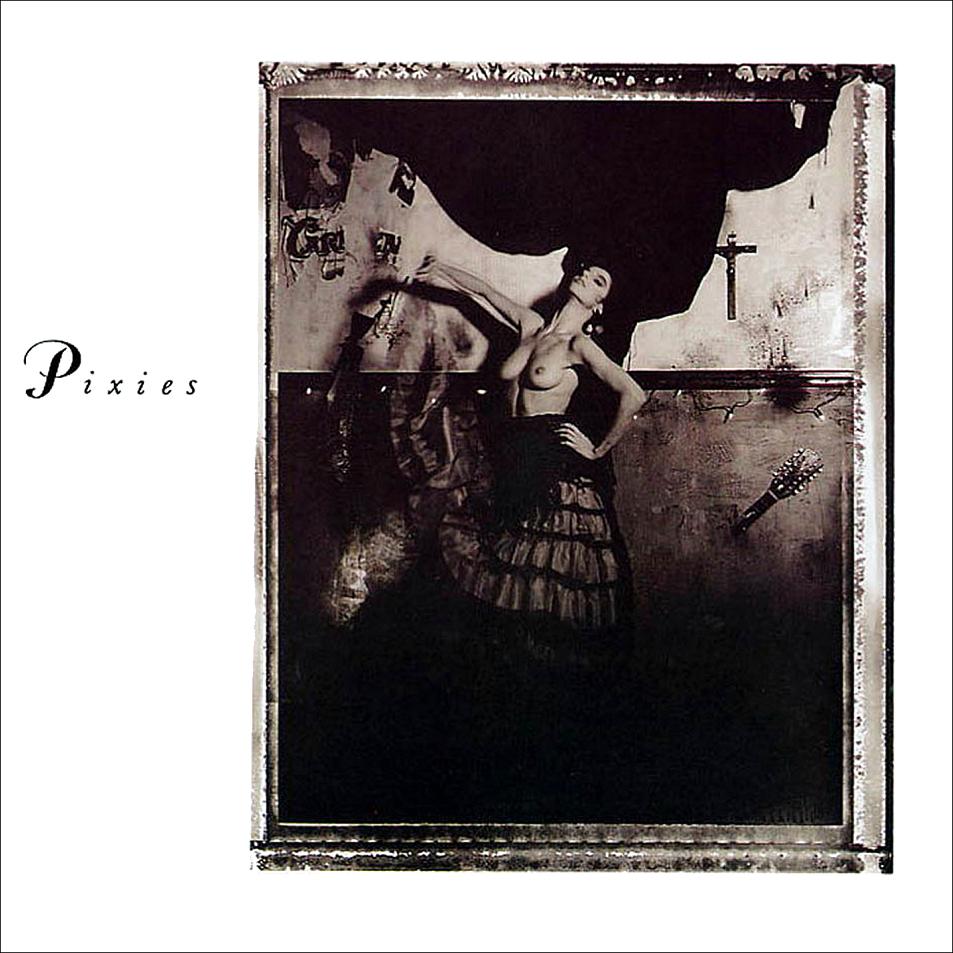
20. Pixies – “Where Is My Mind?”
(1988; 4AD)
Thanks to its consistent placement in movies, commercials, etc., “Where is My Mind?” has turned out to be the Pixies’ big breadwinner. In turn, the song has also become the ideal gateway for many into the band’s addicting catalogue. It makes perfect sense; the song’s contemplative refrain is instantly relatable, even if the dreamlike verses are a bit more peculiar. Even during the verses, the song is so cinematically surreal it’s beguiling. Amidst the slow, melodic build, Steve Albini’s production gives the song a raw vitality. The drums pound away with what would end up being that signature Albini sound and Joey Santiago’s iconic lead riff bleeds through your speakers. The Pixies blueprinted the soft-verse-loud-chorus formula that became so prevalent among ’90s alternative bands. On “Where Is My Mind?,” the band proved reversing that formula could be equally as effective, providing a platform for Black Francis to turn in one of the most haunting performances of his career. – Chris Karman
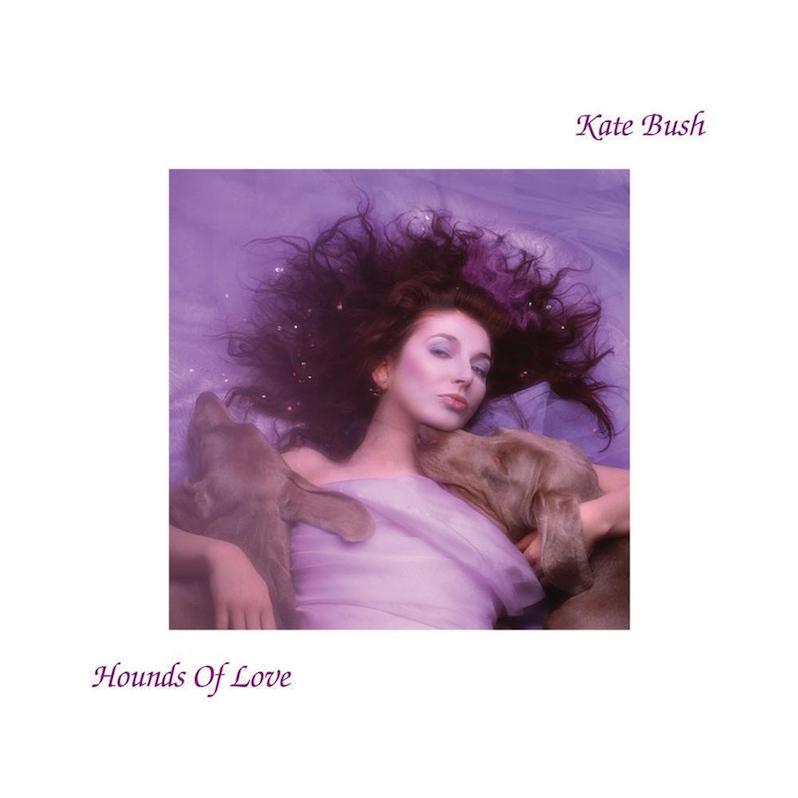
19. Kate Bush – “Running Up That Hill (A Deal With God)”
(1985; EMI)
If one were to merely pore over the lyric sheet of Kate Bush’s stunning 1985 single “Running Up That Hill,” from Hounds of Love, it would be easy to mistake the song for a spare, intimate ballad. Her poetic lyrics, detailing the struggles had by a woman and man in a relationship in trying to understand each other, seem intensely personal, to the point that a listener might feel a bit voyeuristic hearing such heartfelt statements like “If I only could, I’d make a deal with God/ and get him to swap our places.” Yet despite the intimacy of Bush’s soul-baring verses, the song is massive and heroic. It’s a work of stratospheric production, from its chilling walls of synthesizers to its propulsive and booming drums, the likes of which take the passion and power behind Bush’s lyrics to an even greater level. Though it may read like an overheard private conversation, it sounds like voices from Olympus and the crashing of planets. That its original title, “A Deal With God,” almost kept it from being released was a close call; keeping a song this devastatingly affecting and sonically mesmerizing from being heard would be heresy. – Jeff Terich
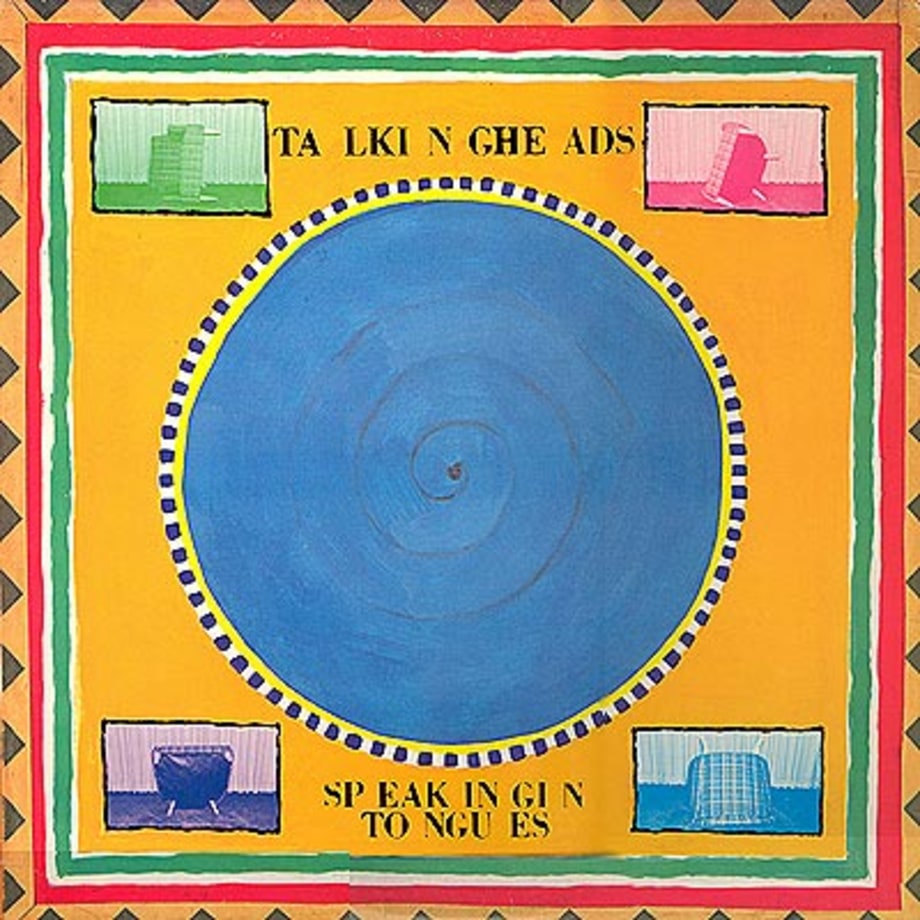
18. Talking Heads – “This Must Be the Place (Naive Melody)”
(1983; Sire)
There are more well-known Talking Heads songs, Talking Heads songs that were bigger hits, but no Talking Heads song is better loved or more simultaneously emotionally mysterious and available than Speaking in Tongues closer “This Must Be the Place.” It is simple and joyful, funky, a little goofy, celebratory yet vague about what it is celebrating. There are, to my mind, a whole lot of great lyrics in this song, the kind that get stuck in your head and take on a life of their own, slipping subliminally into conversations about things mundane, profound, and everywhere in between. My personal favorite is “Out of all those kinds of people you got a face with a view,” but the more iconic “I come home, she lifted up her wings / I guess that this must be the place” is also engraved on an important filter in my subconscious. And, honestly, whenever I hear this song I feel like wherever I am at that moment is most definitely the place. – Tyler Parks
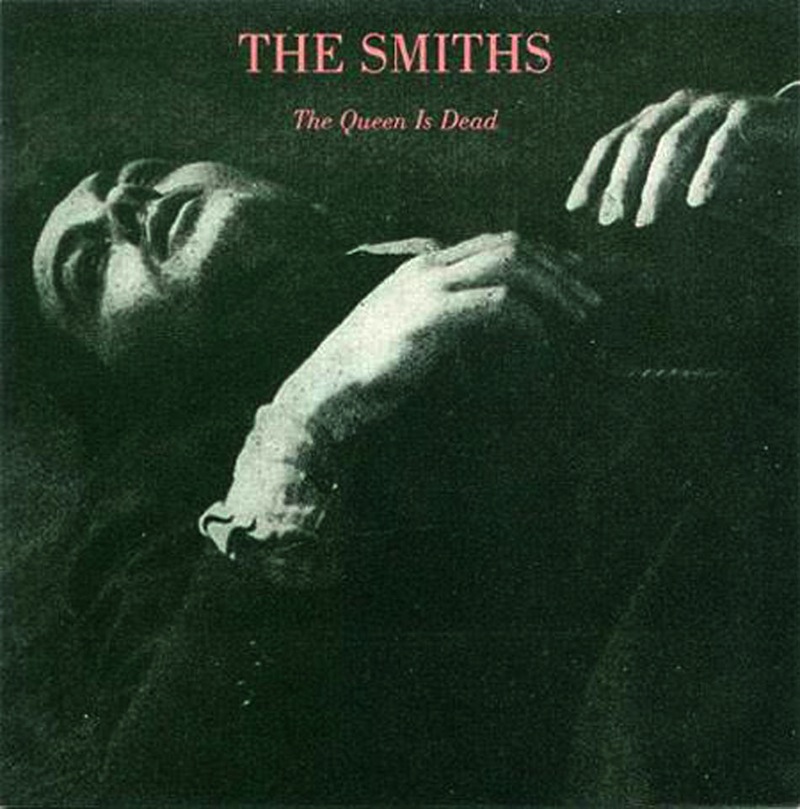
17. The Smiths – “There Is a Light That Never Goes Out”
(1986; Sire)
The quintessential embodiment of Morrissey’s particular vision of romance as doom—or, more specifically, two lovers’ death together as love’s greatest culmination, “There is a Light That Never Goes Out” has bewitched all of those with even the slightest flair for the melancholic and the theatrical aesthetics that flair carries in its genetic code. Of course, a great many people prone to such delectable sorrow are indeed of the teenage persuasion, and this song seems not only to be about that time in a person’s life, but to evoke the darker delights of being young, lost and desperately enamored. No one but Morrissey could have come up with the legendary chorus, nor managed to then sing it in a way that makes it seem the most natural romantic sentiment imaginable. – Tyler Parks
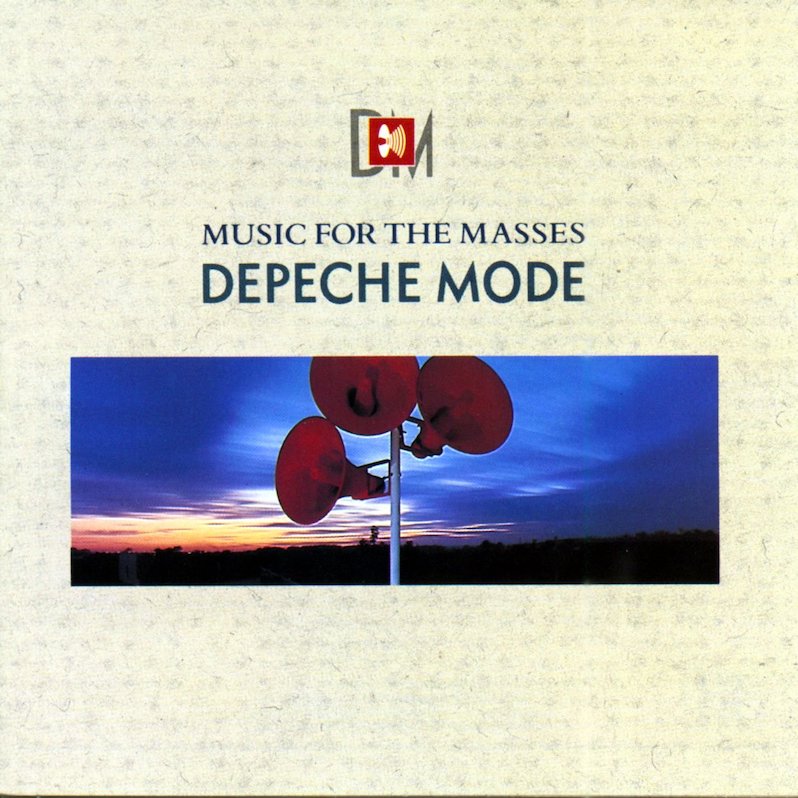
16. Depeche Mode – “Never Let Me Down Again”
(1987; Mute)
I solicited the guesses of my friends and peers about my own personal favorites of the ’80s. While many were able to intuit some of the deep tracks, no one was able to determine my number one pick. That would be “Never Let Me Down Again,” a song that I would one time classify as a personal and sentimental choice, except for the fact that it has long been a favorite among many of the DM faithful, often played as a dramatic encore. The Sturm and Drang of the operatic outro certainly makes for a dramatic and emotional finish, highlighted by the overlapping voices of Gahan and Gore. The latter’s dulcet intonation of “See the stars shining bright / Everything’s alright tonight” juxtaposed with Gahan’s plaintive request of the title is easily my favorite moment in ’80s music. This moment was made even more captivating by the performance captured at the Rose Bowl on the 101 tour, as Gahan steps out on a jetty from the stage, and the crowd is lit, a sea of 60,000 people waving in unison with the charismatic singer. “Never Let Me Down Again” lives up to its name, as it has rewarded me over and over. – Terrance Terich

15. New Order – “Bizarre Love Triangle”
(1986; Factory)
One in a series of amazing singles released by New Order in the 1980s, “Bizarre Love Triangle” is probably the most immediately recognizable and enjoyable this side of “Blue Monday.” Just the kind of emotive club jam synonymous with this Greater Manchester band, this massive tune is propelled by a relentless 4/4 beat, synth bass slaps, and characteristic walls of keyboards and electronics. The title of course says it all; Bernard Sumner’s charmingly imperfect and tender vocals communicate the perpetual uncertainty that is inherent in any love triangle, the agony of waiting and wondering captured brilliantly in the chorus: “Every time I see you falling / I get down on my knees and pray / I’m waiting for that final moment / You say the words that I can’t say.” More of an emotional sketch than a clear delineation, the song remains purposely ambiguous on specific detail and allows the listener to fill in the blanks with their own situation. Sometimes it works out in your favor, sometimes not, but whether you’re on the precipice of joy or misery, this song is infinitely relatable and pretty much impervious to wearing out its welcome. – Derek Emery

14. The Jam – “That’s Entertainment”
(1981; Polydor)
With one simple but stirring chord progression, the Jam churned out what is arguably the finest song in their impressive catalogue. With little more behind him on this Sound Affects standout than an acoustic guitar, an effective bass, and some backing “la’s,” Paul Weller delivers a fit as intense as any of the band’s louder moments. With unwavering conviction, Weller paints a vivid picture of an urban life that’s far less than satisfying. The deafening sounds of urban clamor, the petrol-filled air, and a freezing cold flat all serve to illustrate the looming futility of it all. Even some of the more comforting imagery, such as “cuddling a warm girl,” is stained with the smell of “stale perfume.” This would make for a pretty dismal affair, but the real power of “That’s Entertainment” is the way Weller subtly acknowledges in the song’s refrain the beauty and life within the yearning and frustration. – Chris Karman
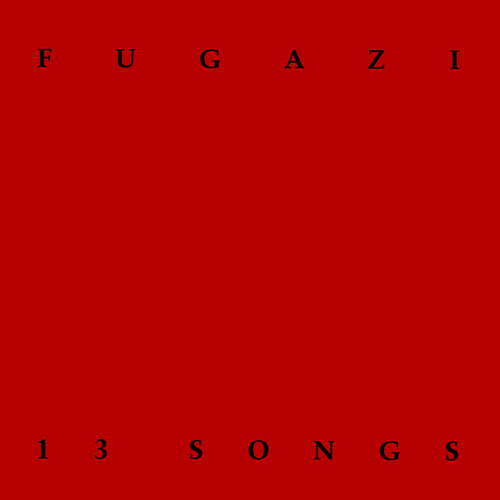
13. Fugazi – “Waiting Room”
(1988; Dischord)
Fugazi had a reputation of being unafraid to preach and lecture their fans and live audiences on the tenets of living a certain way, at times delving into a particular smugness that put off some. But in between that whole mess, they sure had a hell of a lot of fun and, though some people forget, enthusiastically celebrated individuality. On “Waiting Room,” one of the most accessible and – dare I say – poppy Fugazi songs, palm-muted guitar chugs follow the lead of the steadily driving rhythm section and at precisely the right moments collapse into a couple brief, tension-building crescendos and breakdowns. This immaculately recorded and produced track finds Ian MacKaye righteously deriding our collective apathy and laziness, pledging to stop wasting time himself, while Guy Picciotto demands that everyone else “come on and get up!” The playful call-and-response between MacKaye’s rasp and Picciotto’s distinct, androgynous vocal work is nothing short of incredible, its inimitability helping to confirm this song’s status as a true classic of the decade. – Derek Emery
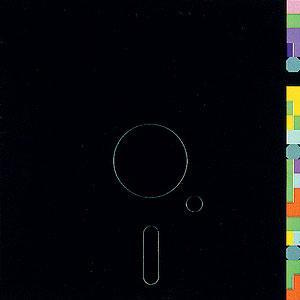
12. New Order – “Blue Monday”
(1983; Factory)
“Blue Monday” helped to popularize electronic dance music with mainstream audiences. This was kind of a big deal back in the 1983, when club music was still largely underground and considered among many music fans to be sub-par to other genres (Consider “Disco Demolition Night,” a promotional event gone wrong when near-riots ensured after crates of records were blown up during a White Sox double header). “Blue Monday” hypnotized listeners with infectious beats, soaring synth lines and wild guitar riffs. The lyrical subject of the song has been highly debated, with speculations including the suicide of their former bandmate, Joy Division vocalist Ian Curtis, a bum relationship, and the effects of cocaine use on the personality. Sumner’s deadpan vocal delivery seems to suggest the answer hardly matters, even as he asks probing questions such as, “How does it feel when your heart grows cold?” At nearly seven and a half minutes, “Blue Monday” remains one of the longest playing pop songs to ever break into radio charts, and remains widely covered and sampled ever since. – Jamie Ludwig
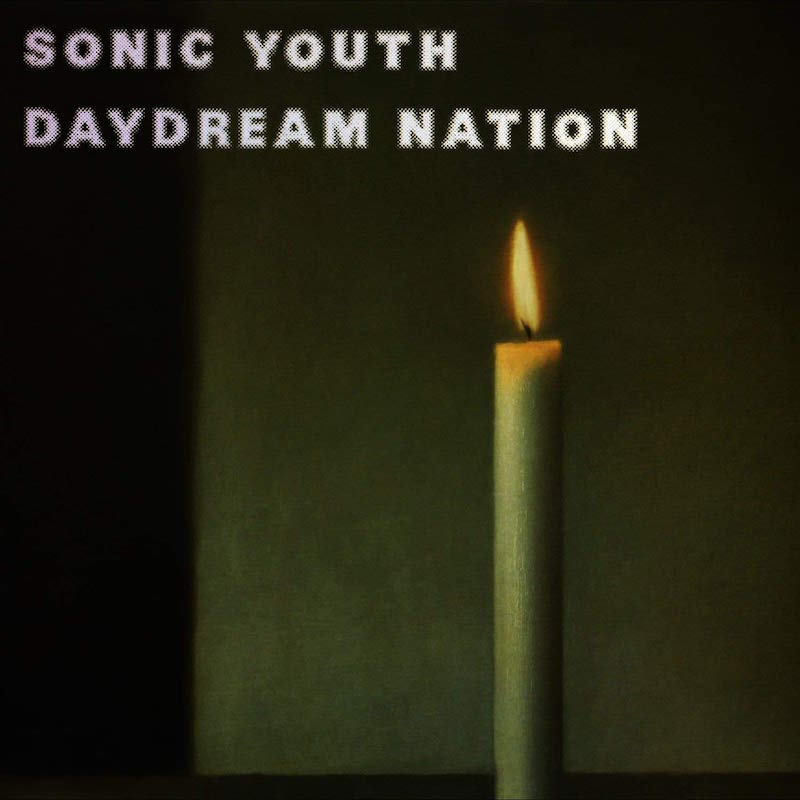
11. Sonic Youth – “Teen Age Riot”
(1988; Blast First)
“Teen Age Riot” finds the Youth buying into what all those hardcore bands they were so ashamed of not being were selling. The kids were, indeed, the Kids, and they were legion, gathering in the sewers of America lying in wait to at least take a decent beer-laced piss on the White House. It’s anybody’s guess though as to whether or not any of the Kids in the pre-Nirvana era wanted to make the time to listen to Sonic Youth’s tight but epic opener to Daydream Nation. It was a pretty ambitious statement of purpose and a rich and textured guitar track. It was, in effect, a precursor to “Paranoid Android” but very American, actually believing that the Kids would, given time, win by simply being the losers they were all born to be. We now know that winning is totally overrated, but it’s good to know that we are living more in Sonic Youth’s America than in Ronald Reagan’s America. – Chris Morgan

10. New Order – “Ceremony”
(1981; Factory)
You could write a brick of an essay on “Ceremony,” most of it reiterating finer points already made by others. It is the most bewitching rock song ever written. (This was true way before the user name “all lined with trees” got me mad friend requests on MySpace from the kinds of girls who contributed heavily to that dimension’s downfall.) New Order didn’t know what they had after Ian Curtis. Accordingly, “Ceremony” sounds like nothing but limbo, a glassy space atwitch with anxieties, as Bernard Sumner, thrust into the foreground, sings soberly of unnerving events, of wheels turning. “Ceremony” is a benediction beyond belief, a rescue from obscurity—the race by the survivors to unscramble Curtis’ original lyrics; the overriding of the tempo from the song’s early self to its teeming, hypnotic finality; the audible pulling at identity. More than anything it’s an autopsy in the original Greek sense, “to see for oneself.” You can literally hear Joy Division turning into New Order. Sumner’s migratory, desolate guitar solo, steadying itself while the other sonics drop temporarily out, is a perfect metaphor for Sumner as sudden, ambiguous lead. That single piece of guitar is one of the most bereaved things I’ve ever heard in music. Which doesn’t explain the absolute spinal-sized thrill of it, waking every bit of yourself you ever thought was dead. – Anthony Strain

9. The Smiths – “This Charming Man”
(1983; Rough Trade)
The Smiths’ catalog is riddled with peaks, from their most impressive production (“How Soon Is Now?”), to their most cynical (“The Queen Is Dead”), their most heartbreaking (“This Night Has Opened My Eyes”), their most blasphemous (“Vicar In a Tutu”) and their most Morrissey (“There Is a Light That Never Goes Out”). But the essence of everything that made The Smiths so revelatory, not to mention the moment that appears to have spawned the most carbon copies, is distilled in “This Charming Man.” The song that introduced The Smiths to the world and later added to their debut album as a bonus track allows guitarist Johnny Marr the first greeting, plucking out a jangly and now legendary riff as accessible as it is idiosyncratic. The song also introduced the world to Morrissey’s now infamously ambiguous sexuality via a fictional tale of a gay man coming to terms with his own identity (“Will nature make a man of me yet?“, “A jumped up pantry boy/ who never knew his place/ he said, ‘return the ring’/ We know so much about these things“). Rooted in glam rock and punk but confronting both social and sexual politics with a unique perspective, “This Charming Man” changed indie rock forever. – Jeff Terich

8. The Cure – “Just Like Heaven”
(1987; Fiction-Elektra)
There are few songs that have ever managed to so serenely withstand the weight of ubiquity as The Cure’s “Just Like Heaven.” The damn thing doesn’t seems to have aged a day, but explodes anew every time it shows up to the party, making everyone who isn’t in love want to be in love and everyone who is in love with someone a little more in love with him or her for the next three and a half minutes. And that is its magic, its raison d’être—to make being in love and desiring being in love physically, palpably present in the world for so long as it plays through the speakers. Everything is perfect about this song: the lyrics, the guitars, the synthesizers…and especially the way Robert Smith’s vocals come in after the long, building intro. That “Show me, show me, show me how you do that trick,” is a trick of its own, a breathless, kaleidoscopic little moment where the song gets a grip on its beholders and takes them—smiling, blissful, and beguiled—wherever it so desires. – Tyler Parks
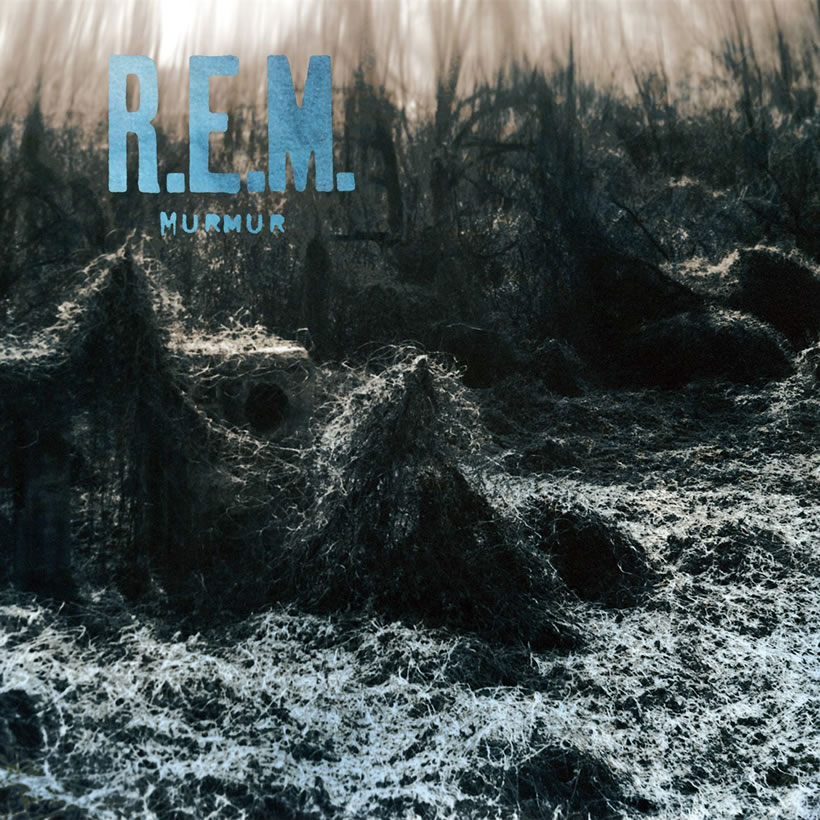
7. R.E.M. – “Radio Free Europe”
(1983; I.R.S.)
R.E.M. was still very much a regional band when they released Murmur, playing a curiously rural brand of indie rock that didn’t yet seem entirely compatible with their northern counterparts Hüsker Dü; and truth be told, Michael Stipe was simply too weird to work on many levels. Still, even for R.E.M.’s quiet period this is one rager of single that established their remarkable dynamic of stripped down, even aggressive folk-rock. Instead of trying to be punk, R.E.M. simply picked up what appealed to them and made it work surprisingly well alongside Peter Buck’s folk-inspired picking style. – Chris Morgan

6. The Jesus and Mary Chain – “Just Like Honey”
(1985; Blanco y Negro)
Taken from The Jesus and Mary Chain’s monumental debut record Psychocandy, “Just Like Honey” is a landmark recording in and of itself. Opening the album with the iconic, instantly familiar (and now heavily overused) drumbeat from The Ronettes’ “Be My Baby,” brothers Jim and William Reid set up their contribution to the birth of shoegaze with undertones of sweet, ’60s pop. The established mood is authentic and overt, but also a bit tongue-in-cheek, as JAMC ultimately drag those pop tendencies into the brutal muck of suffocating walls of guitar noise. Yet “Just Like Honey,” in contrast to much of the record, allows its purity and sweetness to more completely shine through the relatively modest amount of distortion that builds over the song’s three minute run. Jim Reid’s ethereal vocals have an intoxicatingly romantic quality to them as his words describe a less than ideal relationship that’s simply impossible for him to quit: “Walking back to you / Is the hardest thing that I can do / That I can do, for you / For you / I’ll be your plastic toy.” Harnessing an obscured sexuality, the music itself is equally consuming, with the final repeating refrain of “Just like honey” traded between Reid and back-up vocalist Karen Parker twisting effortlessly into the surging crescendo of guitars. A work at once subtle and pleasantly overwhelming, “Just Like Honey” presents both love and sound as a balance between pleasure and pain— a portrayal both honest and remarkably rewarding, respectively. – Derek Emery

5. The Smiths – “How Soon Is Now?”
(1985; Rough Trade)
Over the Smiths’ brief but fruitful career, they managed to become the quintessential British indie band of the era. Given that, it’s a bit peculiar that what is arguably their finest moment doesn’t really even sound like the Smiths. Sure, Johnny Marr’s guitar work is as striking as ever and Morrissey’s wail is characteristically morose, but this isn’t the jangly guitar pop that brought them fame in their homeland. Johnny Marr had already established himself as quite the master of layering his guitars tracks, but this song was in another world entirely. During the course of the song’s six minute-plus length, he and producer John Porter weaved together an incredibly orchestrated mélange of quavering rhythm guitars, echoing leads, and backward loops, all sitting on a cyclic dance beat. Morrissey delivers one of the most resonant lyrical and vocal performances of his career, coming off typically witty and dour. The end result is stunning. The band never really pursued sonics quite like these ever again, and considering the perfection of “How Soon Is Now?”, why would they need to? – Chris Karman

4. Echo & the Bunnymen – “The Killing Moon”
(1984; Sire)
It’s funny how this particular post-punk band, in possession of a name that grows more absurd the more you hear it, has come out of the post-punk universe largely unscathed from self-parody, and may well have saved the genre as a whole. While Bauhaus, The Cure, Killing Joke and even The Fall have all had their lapses in taste, Echo has remained frighteningly consistent in its delivery of art-driven rock that appeals every bit as much to aesthetics as it does the baser passions. “Killing Moon,” in short, is the sexiest song centered on a cold and malevolent image. It lays out a sense of danger in such a way that most people are helpless in resisting. I imagine this Ocean Rain highlight has caused more unplanned pregnancies than any other on this list, save maybe for “Ace of Spaces.” – Chris Morgan

3. Prince – “When Doves Cry”
(1984; Warner Bros.)
There are a lot of ways to classify Prince’s music, but “minimalist” isn’t one of them. The album from which “When Doves Cry” comes, for instance, is the soundtrack to a fictionalized version of His Purple Badness’ own rise to fame. But his first number one single, and the most monolithic song of his dizzyingly huge discography, has become legend not because of something Prince added, but rather something he removed: the bassline. Funny thing, though, is that the song is so sprawling, so dramatic and climactic, its absence isn’t so much a hindrance as a strength. In the course of just under six minutes, Prince packs in his signature mechanical funk beats, at least two guitar solos, a steady stream of ethereal keyboards and a synth outro that seems to ascend toward outer space. Oh yeah, and a sultry, raw sexual energy that only Minneapolis’ funkiest son could create. The song is decades old and it still sounds like new, the kind of ambitious genre hybrid that few are bold enough to try and fewer still succeed at. It’s generally not good practice to leave a bassline out of a song meant for dancing or radio, but “When Doves Cry” is different. It’s perfect. – Jeff Terich

2. Michael Jackson – “Billie Jean”
(1982; Epic)
It’s entirely possible that Michael Jackson’s Thriller could have lived and died with just one huge release to its credit. Of course we’re speaking of “The Girl is Mine,” his ultimately hokey duet with Paul McCartney. With that, we acknowledge the alternate histories that nip at the heels of second single cut “Billie Jean” and, frankly, pop music itself. What if Jackson hadn’t stumped so hard to include it on the album in the first place? There would have been no electrifying Motown 25 performance of it, no attendant debut of glove or moonwalk, no noir video to break MTV’s color barrier and revolutionize sonic storytelling. Maybe the song’s impact could have been lessened with the title suggested by Jackson’s father-figure producer Quincy Jones, the obvious and indistinct “Not My Lover.” How does the Epic record label roll then? What is their A&R strategy for a follow-up?
Maybe the thrill disappears if Jones and Jackson select any of the song’s 90 other mixes. Thankfully, though, there is one thing common to all of the mixes that defines the song and changes the world. Quietly nicked from Hall and Oates’ “I Can’t Go for That (No Can Do),” the best bassline ever makes Jackson’s celebrity-obsessed bête noire interminably funky. It didn’t begin Jackson’s reign as an ultramegasuperstar, as the “Billie Jean” lyrics come from personal experiences in The Jackson 5. Yet it elevated him to heights unimaginable, and unimaginably uncomfortable, heights not seen since—hey, look at that!—the days of Paul McCartney and his mates. A kiss of life for Jackson’s career as an honest-to-goodness adult, it was also ultimately the kiss of death for Jackson himself. – Adam Blyweiss

1. Joy Division – “Love Will Tear Us Apart”
(1980; Factory)
This is the song that launched a thousand imitators, and though many captured the sound, none quite captured the spirit. One can isolate Bernard’s guitars, Hooky’s bass or Stephen Morris’ drumming as being the key element that drives the track, but it is the combination of the yearning keyboard sequences and Ian Curtis’ plaintive, soul-searching vocals. “Love Will Tear Us Apart” was somewhat the song that heralded the onset of the ’80s, and the meeting of post-punk and New Romanticism, while also sadly representing the close of the ’70s, and along with it, the passing of Curtis, himself. Reportedly about Curtis’ strained marriage, the song took on new life as a tragic anthem, the title being engraved on Curtis’ tombstone. Even without the apocrypha, the song is legendary. It is made all the more tragic as, despite having numerous great songs, it is the proof that Joy Division was merely getting better and better, releasing their best effort as their final single, though perhaps not intended as such. It would be quite a feat for a band to release a song that would define a decade at the onset of that decade, but as you can see, according to our collective opinion, that is exactly what Joy Division accomplished. – Terrance Terich

